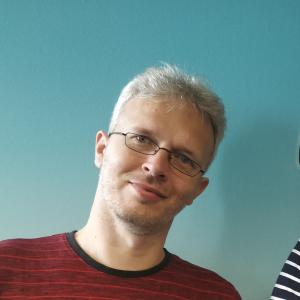Introduction
Each of us has encountered addiction – whether through personal experience or knowing someone close to us. In fact, we all have several of these encounters. But they are often not major, obvious, or even particularly disturbing. Moreover, some of them have only occurred during certain periods of our lives. We are not even aware of some, and others don't notice them either. We even consider some completely normal. For example, we love watching our favorite shows every night.
The mechanism of addiction itself remains hidden – we see the symptoms, but not its internal operational structure. Family constellation allowed us to directly experience and discover this structure.
We used a method where people take on the roles of psychological elements and begin to intuitively sense information that is otherwise inaccessible. This made it possible to study the internal mechanism of addiction.
We investigated the mechanism of addiction using this method, inspired by the Patterns of Mind course, to understand its structure, components, and progression, and to find an effective solution pathway.
Keep in mind that this is a single experiment and does not claim absolute truth.
Starting Point
We began with the following hypothesis:
An addicted person has as strong a desire for their addiction object as they have a desire to avoid the pain that causes it.
To explore this hypothesis, we conducted an experimental constellation focused on understanding addiction as a general phenomenon rather than working with any individual's specific addiction. Participants served as representatives for the various psychological elements, working purely from intuitive sensing without prior knowledge of the addiction pattern being explored.
The constellation began with five roles:
- Person (the one having an addiction)
- Addiction object (alcohol, computer games, etc.)
- Desire (what connects the person to the addiction object)
- Pain (abandonment, worthlessness, etc.)
- Not-wanting (what connects the person to pain)
We placed them in a line in this order: addiction object, wanting, person, not-wanting, pain. The person was positioned facing towards the addiction object with their back turned towards the pain.
Course of the Constellation and Discoveries
Neutrality of the Addiction Object
When the addiction object stood in the room, they were completely calm. They were almost bored. This was somewhat surprising, because as humans we tend to attribute magical power to the addiction object that isn't actually there. They simply stood there neutrally. It was completely obvious that the problem wasn't in the addiction object, but in the person's attitude – the wanting – toward the addiction object.
Acknowledgment of Pain
When the person turned their gaze toward the pain and said "I see you, I accept you as mine, I am ready to feel you" (this applies to personal pain), a visible change occurred. The pain, who had previously withdrawn to the edge of the room, cautiously took a step toward the person. They felt lighter and were no longer so hunched over. There was less burden, and their posture was more confident. A little hope had appeared in their eyes.
The result was remarkable:
- The amount of pain decreased
- They showed signs of relief
- Could partially approach the person
Discovery of Belief
Next, we brought belief into the work – that internal decision about oneself that creates pain. For example: "I have been left without love" or "I don't deserve love."
Every such belief is illusory – only one perspective among many ways to see the situation. The problem is that this belief blocks access to our natural part, creating pain-distortion.
Working with belief was the most central part of this constellation. Observing the pain was the most important progress indicator. These were the key roles.
Natural Part and Permission for Wholeness
The constellation showed that every belief prevents experiencing a certain natural aspect of oneself – for example, joy, trust, or responsibility. These real parts are always present, but the belief creates a barrier. A paradoxical situation arises where we consider the illusory real and the real illusory or inaccessible.
"This is your natural part. You have permission to receive it" – these words brought about a significant change. Perhaps the most significant change. The person's face changed, as if some internal tension had suddenly been relieved and an invisible barrier had disappeared. They simply needed permission for this part whose existence they weren't even sure about. They had never thought about it – that they could be connected with this part of themselves. We often assume we must fight for our natural being, but we actually just need self-permission to reunite with it.
Transformation and Reconnection
When the belief had been dealt with, the following things happened:
- The natural part could reunite with the person – became joyful and felt loved. There was a very large amount of positive emotion in this. They were so happy and radiant. Like a child basking in love.
- Pain walked out of the room and returned as a positive emotional resource, moved behind the person's left shoulder, to the mother's place
- Wanting transformed into positive creative energy, moved behind the person's right shoulder, to the father's place
- Ancestral figures appeared – they needed to be told: "I leave your experiences to you. I won't save you anymore." And they too found peace.
A very harmonious structure formed in the field: in front of/beside/in the arms of the person was their natural part, behind them were feelings and creative energy, behind them ancestors. They all placed their supporting hand on the shoulder of the one in front. Very great support and a moving feeling. The natural part that had been found was beaming with happiness.
Practical Solution Pathway
The constellation confirmed the initial personal addiction hypothesis and supplemented it with practical steps:
- Notice the wanting (attraction that connects the person to the addiction object)
- Turn attention to the pain that addiction helps avoid
- Acknowledge the existence of pain: "I see you, accept you as mine, am ready to feel you"
- Discover the belief under the pain – a specific self-damaging decision
- Find the natural part that the belief blocks
- Give permission to connect with your natural part
- Experience connection with the natural part
Two Mechanisms of Addiction
The constellation revealed two mechanisms of addiction:
- Personal mechanism – result of one's own experiences and beliefs
- Inherited mechanism – components from ancestral experiences
Often it's a combination of both. For example, the pain belongs to ancestors, but due to identification with them, it is experienced as one's own, leading to addiction. As the constellation showed, depending on the mechanism (personal or inherited), the solution path is different.
Key Roles in Working with Addiction
Continuing to work with addictions, it became clear that not all originally tested roles are necessary. We found that the following roles were most beneficial:
- Person/Client
- Pain they try to avoid with addiction
- Belief that causes pain (concrete, in the form of a specific statement)
- Person's natural part that the belief blocks
In Conclusion
Neale Donald Walsch has said "What you resist, persists." Addiction is the best example of this. Based on this, addiction could be defined as "persistent and active resistance to pain whose cause is illusory."
The constellation showed that addiction has a very clear psychological mechanism. In addition, it also showed the steps for working with it, which we later practiced successfully.
If you notice these patterns in yourself or your loved ones, it's a good idea to contact a certified professional family constellation facilitator (or another experienced therapist) who knows how to work with inherited family patterns.
We observed the mechanism of addiction in specific forms:
The experiment was conducted by Ragnar Kurm.
Note: This article describes one constellation experiment for studying the mechanism of addiction. It does not replace medical consultation or treatment, but offers an additional perspective.

